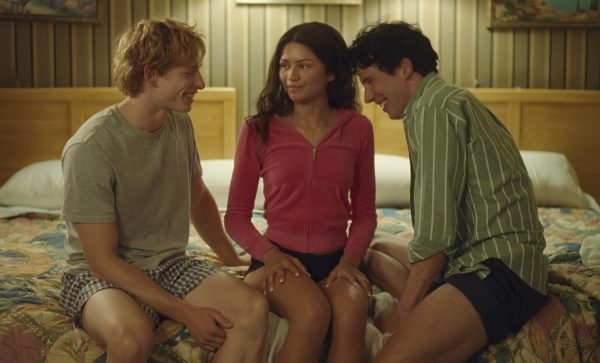Wes Anderson’s film style growing stale
April 16, 2018
Director Wes Anderson’s second stop-motion venture, “Isle of Dogs,” delivers all of the trademarks of Anderson’s distinct style. The film is visually stunning, but in ways audiences may find dully repetitive when compared to the whole of Anderson’s filmography.
“Isle of Dogs” was released March 23, but like many arthouse films that lean to the obscure, the film took several weeks to be released in local theaters. If history is any indication, filmgoers should act fast as it’s likely the small indie picture will be replaced as soon as the next big budget blockbuster hits theaters.
Set in dystopian Japan, a canine flu outbreak leads all dogs to be quarantined on a nearby island of trash. A boy named Atari, voiced by Koyu Rankin, searches for his dog, Spots, with the help of a team of dogs whom he meets after crash landing on the island in a small one-man plane.
The film is star-studded to say the least, with many of Anderson’s frequent collaborators, like Edward Norton, Bill Murray and Bob Balaban making a comeback. Stars who have never before been featured in an Anderson film also make appearances, including Frances McDormand, Greta Gerwig, Bryan Cranston and Scarlett Johansson.
The voice acting talent helps enforce the tone of the film using the type of deadpan deliveries commonly associated with the performances in Anderson’s films. The underplayed, sardonic nature of the character’s voices allows the emotional emphasis of the scenes to come from music choice and visuals.
Like Anderson’s other works, “Isle of Dogs” is so meticulously designed that the world of the film feels immersive and real, though the audience knows most of what is seen on screen are models and stop-motion puppetry. The keen attention to detail is a selling point of this experience, and the dark but quirky tone Anderson is famous for is consistent in this motion picture.
Without a doubt, Anderson is the master of the worlds he creates; however, some may argue he leans too heavily on his own personal style, hesitating to deliver anything to challenge what viewers expect of him.
The overall positive reception of the movie on Rotten Tomatoes seems to indicate symmetrical framing and other visual gimmicks he employs have not gotten old for many audience members. With such vision and talent, viewers almost wonder if Anderson is capable of much more than he’s putting on screen, but has grown too comfortable in his own consistent vision to do so. Marathoning Anderson’s films may seem like an endless string of Rube Goldberg machines, yellow text and overhead shots of hands and desks. “Isle of Dogs” does little to break this mold other than the stop-motion medium used only once before by Anderson in “Fantastic Mr. Fox.”
Criticisms of repetition aside, it’s a film that’s fully self-realized and delivers what’s expected of it. The performances are interesting, the aesthetics are fun to look at and somewhere in there is a story about the connection between a boy and his canine best friend.
For fans of Anderson’s work, it’s a must see. For people who aren’t sold, it’s likely a case of seen one, seen them all.













